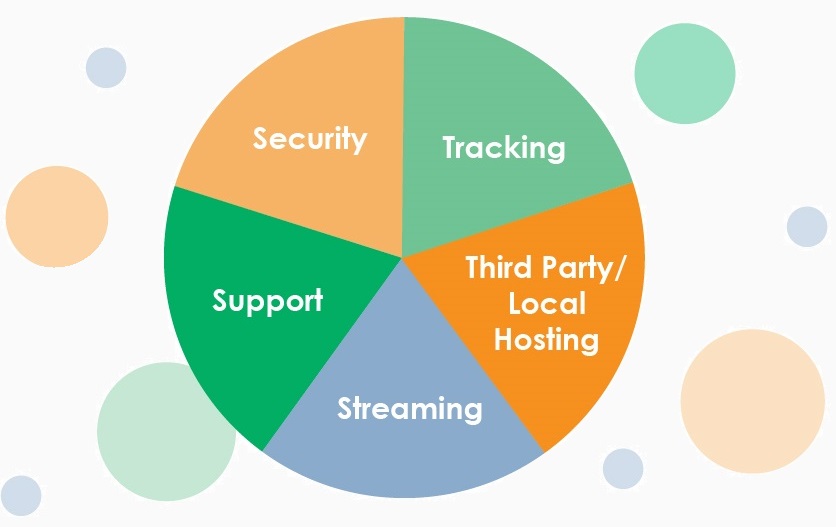
“Video is too hard and too complicated for us to do and doesn’t serve a good learning purpose.” We hear things like this all the time. Many in our community are jumping right into producing and using video in learning, while an equal number of others have been taking a “wait and see” attitude. Whichever camp you fall into, I’m sure you’ve heard several of the same objections that we have to using video for learning. This post offers our perspective on those objections, and some advice on how to address them.
Here are the five most common reasons we hear about why video is too hard to do for learning—and what you can do to mitigate them.
Reason #1: “I can’t host video on my LMS.”
When we hear this, we most often hear the underlying reason, which concerns the ability of the LMS and/or server infrastructure to host and progressively download or stream video. Additionally, you may hear questions about the security of using services such as a private YouTube channel or Vimeo.
To address the concern, you can check into third-party hosting; many Learning Management Systems provide the opportunity to link to video in a third-party package. Third-party services such as Brightcove require purchasing the service separately; however, that purchased service gives you the additional security and user support that you need.
To completely answer the hosting question, there are five main pieces of the pie to figure out, as shown in the figure below. These include: security, tracking, third party/local hosting, streaming, and support. It’s important to partner with the people in your organization who can help you determine what your best options are for a third-party provider.
Reason #2: “Maintaining these videos is too difficult.”
When you or others that you work with state, “I need a video,” are you asking yourselves, “Is this content appropriate for video?” Key to determining this answer is to ask how often your content will change. For topics that change quarterly, high-production-quality video may not be the best option.
When you decide that video is appropriate, don’t underestimate the importance of content design, including overall length and purpose of the video. Remember that it can be easier to update small chunks of live video that you embed into longer pieces. Also, when shooting live video, remember that continuity of scenes and actor availability will be key considerations. Using narration instead of live shots, shooting hands instead of faces, using locations that are representative of situations rather than specific, are all tips that can help. Again, careful planning serves to help you in the future!
Reason #3: “Photo stills with voiceover is just as good as video.”
This really depends. If you have images and voiceover that work for the content, this may be enough. Remember, though, that finding the right images, then editing and treating them, may not lead to much cost savings versus just shooting a video. Additionally, if you are going to go to the expense of a custom photo shoot to create the stills, you may be looking at the same type of expense.
If video serves the purpose better for illustrating the content, or the content action is dynamic, the expense could be a wash…so go for it.
Reason #4: “It looks cheap and the quality is bad given our budget.”
Have a plan and make investments in the right areas. An investment in good-quality equipment that you can use over and over, including tripods and lighting, improves your output. Also, commit to learning the skills necessary to use all of that equipment. Alternately, look at how you can collaborate or work with those who have the expertise to make the most of the budget you have and learn along the way.
When collaborating, make sure you have examples of what you are looking for so that you can discuss what’s important about that to you. This will lead to a productive discussion about what is possible.
Reason #5: “Editing video is too time consuming.”
Editing will take time. However, there are things you can do before and during the video shoot that make the editing process easier. Have a good storyboard and a shot list. These items assist in communication before, during, and after the video shoot. During the shoot, use the storyboards and the shot list to take detailed notes about the clips: what worked, why did it work, and when the video recording started and stopped. Having these details creates a smoother experience for the editor. Finally, you’ll need the right computer for the editing you are going to do.
What other objections do you hear? Do you have other tips you would offer? Let us know in the comments.

